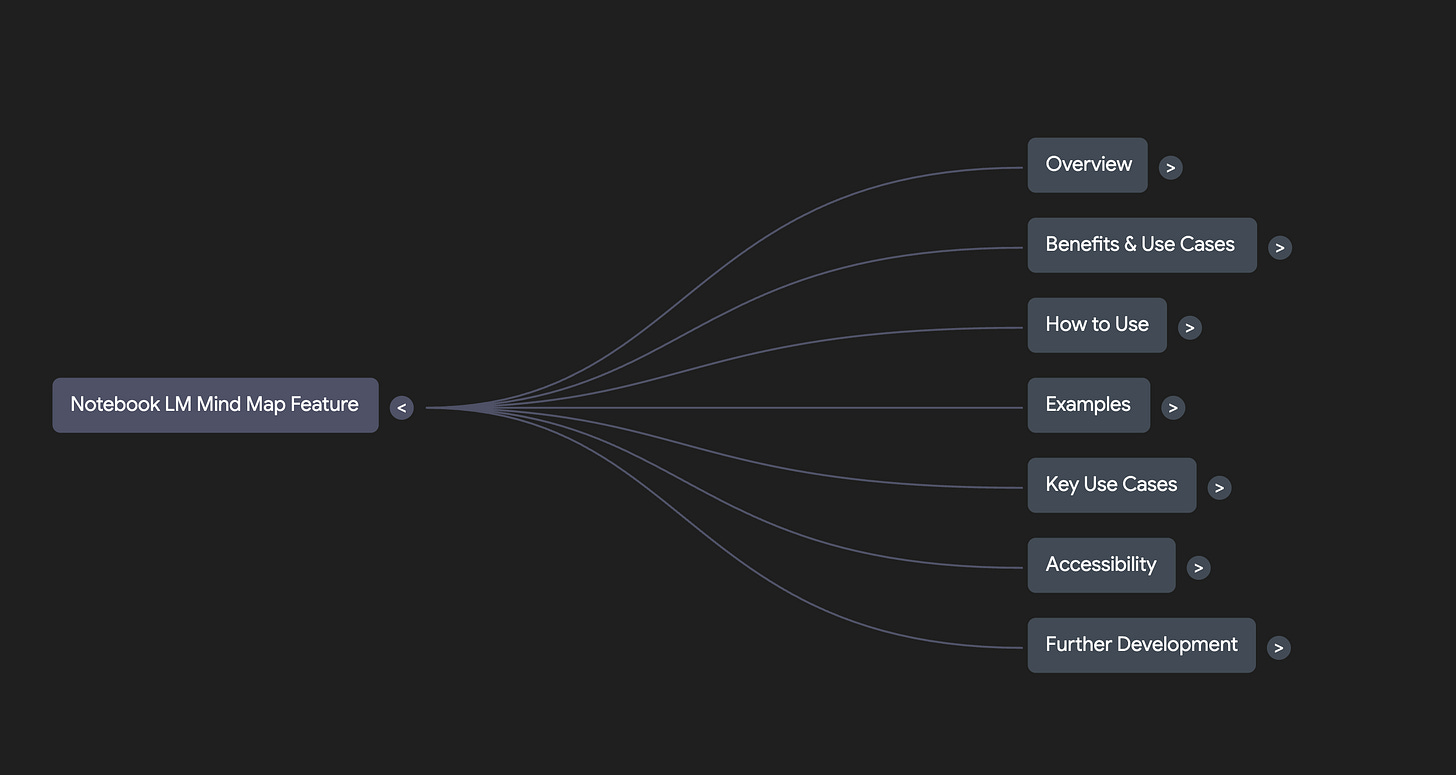How to create a content repurposing system with NotebookLM mind maps
Create weeks of high-quality content without the burnout of starting from zero.
→ Want my proven prompts? Get lifetime access to my personal Prompt Vault – a constantly updated Notion database with the exact prompts I use for writing, research, and content creation.
After creating my guide on NotebookLM's new mind map feature, I realized we needed to dive deeper into what might be its most powerful use case: systematic content repurposing.
Most content creators still approach repurposing haphazardly—extracting quotes for social posts or adapting articles for different platforms when they remember to. But NotebookLM transforms this into a systematic process that can dramatically multiply your content output with minimal additional effort.
The content repurposing problem
You've probably experienced this: You spend time crafting the perfect article, newsletter, or video. You publish it, get some engagement, and then... it's done. That valuable content effectively disappears into your archive, with only a fraction of its potential realized.
Traditional content repurposing is:
Time-consuming (often requiring manual review of old content)
Inefficient (missing connections between related pieces)
Unsystematic (happening sporadically when you remember)
Limited by your own perspective of what's valuable
NotebookLM's mind map feature solves all these problems by visually extracting and organizing the inherent value in your content, revealing opportunities you'd likely miss otherwise.
Setting up your content repurposing system
To get started, you'll need:
A NotebookLM account (completely free)
At least one piece of content to repurpose
10-15 minutes to set up your initial workflow
Let's break down the systematic approach to repurposing with NotebookLM:
The 4-step content repurposing workflow
Step 1: Strategic source selection
The most efficient repurposing starts with the right source material. For best results, choose content that is:
Comprehensive: Longer, in-depth pieces contain more repurposing opportunities
Evergreen: Content with lasting relevance provides more reusable elements
Performing well: Start with content your audience already shows interest in
Complex: Multi-faceted topics yield more branch points for new content
You can repurpose a single piece effectively or analyze multiple pieces together to discover cross-connections.
Step 2: Mind map generation and analysis
Once you've selected your source material:
Upload your content to NotebookLM (articles, PDFs, transcripts, or pasted text)
Click "Create a mind map" in the right sidebar
When the mind map appears, spend time exploring it fully:
Expand all major branches to see subtopics
Look for unexpected connections
Identify strong standalone concepts
Note topics that appear across multiple sources
The key insight: Let the AI show you what's in your content rather than relying solely on your memory or perception. You'll often discover valuable angles you never consciously included.
Step 3: Content extraction techniques
Now comes the transformative part. There are four primary ways to extract repurposable content:
1. Branch-to-Article Conversion: Each major branch in your mind map represents a potential standalone piece. To extract it:
Click on the branch node
NotebookLM will generate a detailed brief about that topic
Save this brief as the foundation for a new piece
2. Cross-Source Concept Bundling: When using multiple sources, look for concepts that appear across several pieces:
Identify nodes with similar themes across branches
Click each one to generate briefs
Combine these briefs into a single, more comprehensive piece
This technique creates "best of" content that synthesizes your strongest insights on a particular topic.
3. Depth-to-Breadth Transformation: Convert a deep dive on one topic into multiple shorter pieces:
Look for sub-branches with substantial detail
Extract each as its own brief
Expand each into a focused piece on that single aspect
A technical tutorial might contain 5-7 different techniques that could each become their own focused guide.
4. Progressive Expansion: Use the mind map to create a content sequence:
Start with a broad overview piece based on the central node
Create subsequent content pieces from each major branch
Each piece links back to the overview and forward to related content
This creates a content web that keeps readers engaged across multiple pieces.
Step 4: Format transformation
The final step is transforming your extracted content into appropriate formats:
For newsletters and articles:
Use major branches as section headings
Use sub-branches as subheadings
Incorporate connection points as transitions between sections
For social media content:
Extract single nodes as standalone posts
Use branch relationships to create thread structures
Convert complex nodes into carousel or multi-image posts
For video scripts:
Use the mind map structure as your outline
Major branches become key timestamps/chapters
Sub-branches inform your talking points
This could be: 1 video → 7 newsletters → 21-35 Notes → dozens of social posts, all from a single piece of original content.
Advanced techniques for maximum efficiency
As you get comfortable with the basic workflow, here are some advanced approaches:
1. Content Layering: After extracting content from your mind map, generate a new mind map from the extracted content to discover even more angles and connections.
2. Strategic Sequencing: Analyze your mind map to determine the most logical publication sequence for your repurposed content, creating a content calendar that builds knowledge progressively.
3. Gap Identification: Look for "thin" areas in your mind map where concepts aren't fully developed. These represent opportunities for new original content to complement your repurposed material.
4. Audience Segmentation: Use different branches to create content tailored to different audience segments based on their specific interests or needs.
With this system, you'll extract significantly more value from every piece of content you create, building a self-reinforcing body of work that serves both your audience and your growth goals.
Notice how this approach fits perfectly with what I've been sharing about systematic AI content creation. It's about creating repeatable processes that multiply your output while maintaining quality and coherence.








Alex, this is very useful. Thank you.
I'll give It a try!